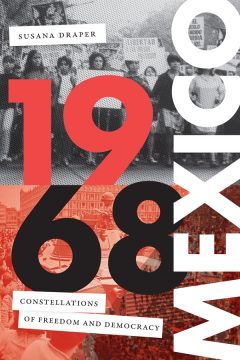Anne Freeland at Marginalia Review:
 On October 2, 1968, Mexican police fired on unarmed student protesters in the Plaza de las Tres Culturas of Tlatelolco, in the historical center of Mexico City. While the state initially reported twenty-six dead, witnesses and independent investigators have estimated that two to four hundred people were killed. Many more were injured and imprisoned. Ten days after the massacre, president Gustavo Díaz Ordaz inaugurated the Olympic Games that were meant to showcase Mexico’s burgeoning modernity on the global stage, something the increasingly conspicuous mass protests had threatened to disrupt. The games themselves were used as a stage for political dissent when, on October 16, Tommie Smith and John Carlos gave a Black Power salute as the Star-Spangled Banner played at their medal ceremony, an iconic gesture linking Mexico’s student movement to another site in the global constellation of protests that year, the American civil rights movement. The Tlatelolco massacre and its impunity, closely followed by the symbolic performance before the international community of the legitimacy of the authoritarian rule of the PRI (Partido Revolucionario Institucional) by means of the Olympics, dealt a devastating blow to the mass movement in the streets. But the collective political and aesthetic projects that had begun in the laboratory of the Mexican student movement continued to evolve.
On October 2, 1968, Mexican police fired on unarmed student protesters in the Plaza de las Tres Culturas of Tlatelolco, in the historical center of Mexico City. While the state initially reported twenty-six dead, witnesses and independent investigators have estimated that two to four hundred people were killed. Many more were injured and imprisoned. Ten days after the massacre, president Gustavo Díaz Ordaz inaugurated the Olympic Games that were meant to showcase Mexico’s burgeoning modernity on the global stage, something the increasingly conspicuous mass protests had threatened to disrupt. The games themselves were used as a stage for political dissent when, on October 16, Tommie Smith and John Carlos gave a Black Power salute as the Star-Spangled Banner played at their medal ceremony, an iconic gesture linking Mexico’s student movement to another site in the global constellation of protests that year, the American civil rights movement. The Tlatelolco massacre and its impunity, closely followed by the symbolic performance before the international community of the legitimacy of the authoritarian rule of the PRI (Partido Revolucionario Institucional) by means of the Olympics, dealt a devastating blow to the mass movement in the streets. But the collective political and aesthetic projects that had begun in the laboratory of the Mexican student movement continued to evolve.
more here.
